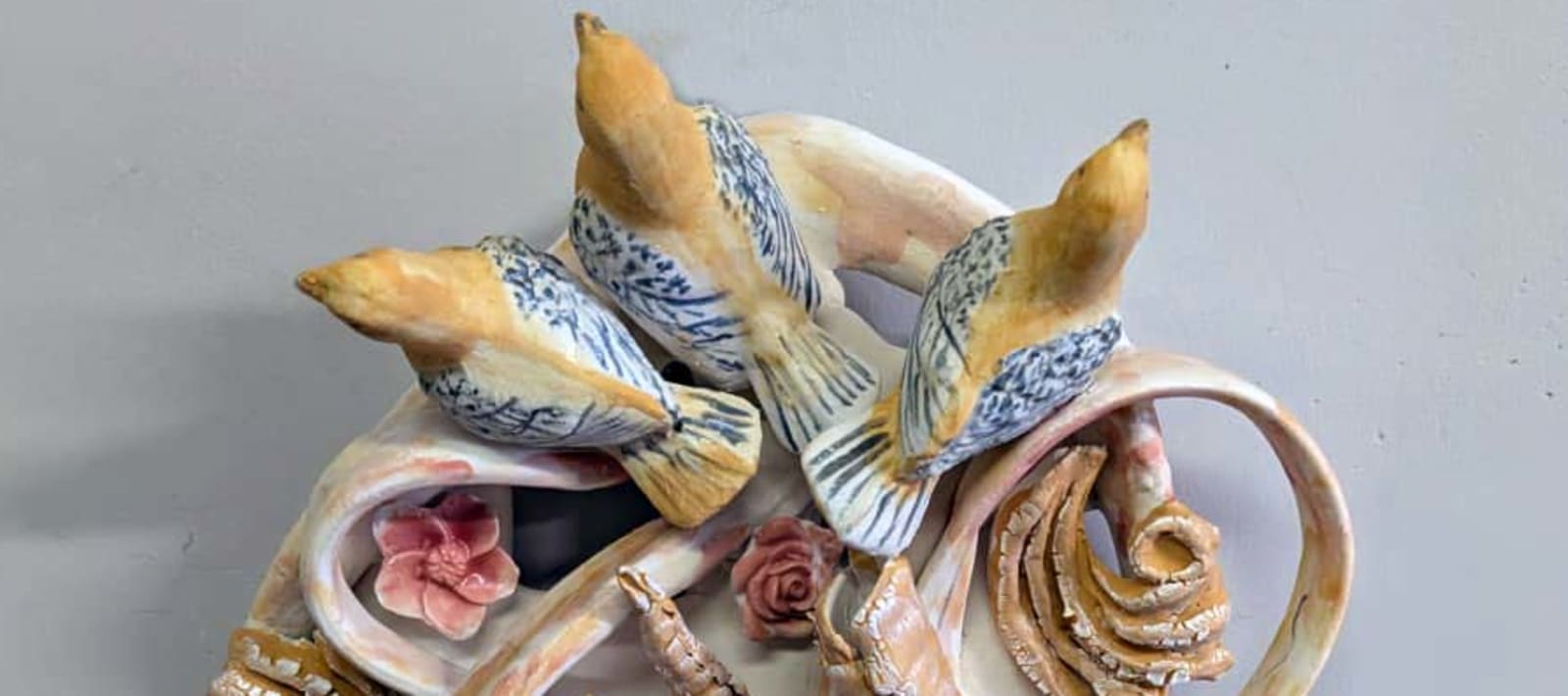Inspired by the ancient Far East technique of 'Cloisonné', Francis explores casting glass in copper forms to create pieces unlike anything we've seen before.
After hearing that multi-media artist Francis was working on a series very interesting new pieces, we turned to Wikipedia to learn a little bit about the ancient technique of cloisonné:
 Cloisonné (French pronunciation: [klwazɔne]) is an ancient technique for decorating metalwork objects. In recent centuries, vitreous enamel has been used, and inlays of cut gemstones, glass and other materials were also used during older periods. The resulting objects can also be called cloisonné. The decoration is formed by first adding compartments (cloisons in French) to the metal object by soldering or affixing silver or gold wires or thin strips placed on their edges. These remain visible in the finished piece, separating the different compartments of the enamel or inlays, which are often of several colours. Cloisonné enamel objects are worked on with enamel powder made into a paste, which then needs to be fired in a kiln.
Cloisonné (French pronunciation: [klwazɔne]) is an ancient technique for decorating metalwork objects. In recent centuries, vitreous enamel has been used, and inlays of cut gemstones, glass and other materials were also used during older periods. The resulting objects can also be called cloisonné. The decoration is formed by first adding compartments (cloisons in French) to the metal object by soldering or affixing silver or gold wires or thin strips placed on their edges. These remain visible in the finished piece, separating the different compartments of the enamel or inlays, which are often of several colours. Cloisonné enamel objects are worked on with enamel powder made into a paste, which then needs to be fired in a kiln.
Francis' Modern Interpretation of the Process
The glass is carefully placed in the formed copper strips (photo 1 below), placed on a kiln shelf (photo 2), and heated to melt and settle in the copper. The forms are then placed together to form a composition (photo 3). The finished piece shown here was caste again in concrete.
CLICK ON A THUMBNAIL TO VIEW LARGER IMAGES.



